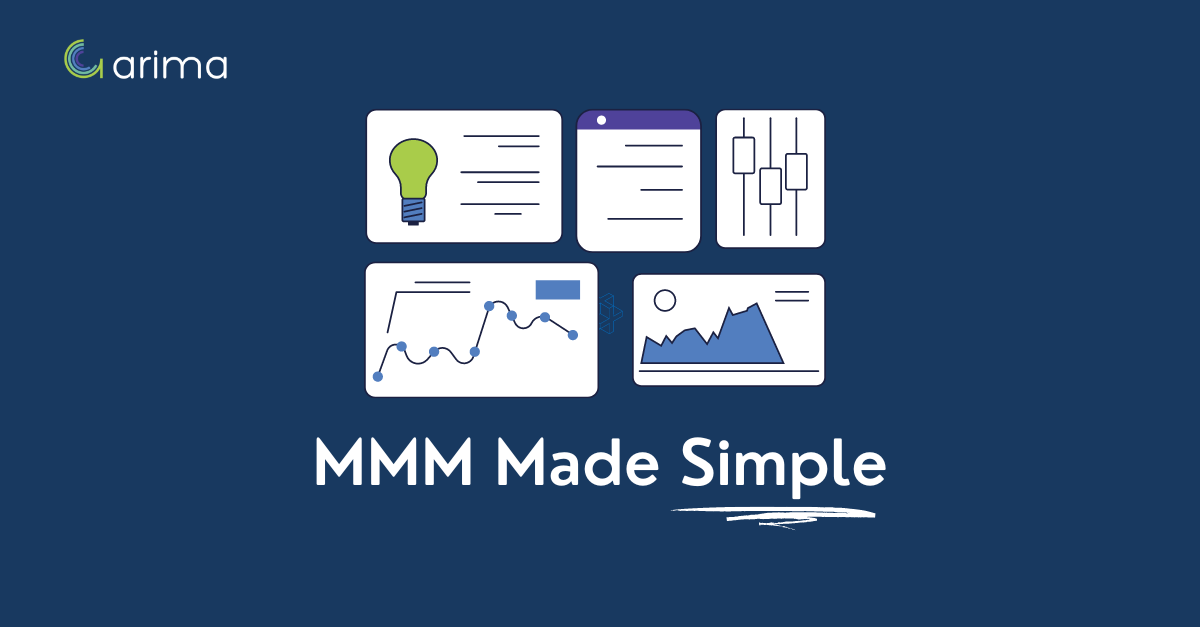Updated Oct 2024
Marketers constantly juggle decisions about where, when, and who to target with their ads. Luckily, Marketing Mix Models (MMMs) are here to help make sense of it all and guide those choices! In this article, we'll provide a straightforward and easy-to-understand guide to the fundamentals of MMMs, covering what they are, why they matter, and how they can elevate your marketing efforts effectively and efficiently.
What are Marketing Mix Models?
Marketing Mix Models are statistical models that help businesses understand the relationship between a particular KPI—such as sales, transaction volume, online activity, or any other brand-related metric—and various drivers that impact those KPIs. These drivers can include factors like media spending, sales promotions, macroeconomic conditions, or competitors' actions. Essentially, anything that could affect your brand's performance can be a driver. The goal of an MMM is to establish how these factors influence your KPIs and determine which are more or less important.
When this information is displayed on an MMM tool, it breaks down various factors—such as media spend, promotions, or macroeconomic influences—in a clear and easily digestible way. These factors are often shown on dashboards or charts, making it simple for users to identify key drivers and see how each one impacts their KPIs. The visualization helps businesses quickly grasp what’s working, what needs adjustment, and how future actions might affect their performance.
This intuitive display allows for faster decision-making, empowering marketers and advertisers to optimize strategies with confidence.
 Arima’s media optimization model
Arima’s media optimization model
How do MMM tools work?
In simple terms, MMMs use a technique called Bayesian regression to understand the relationship between your key drivers (like ad spend, pricing, promotions) and your KPIs (such as sales or revenue). The model creates lines of best fit between these drivers and KPIs, running multiple simulations to find the best combination of factors that can predict your brand's performance. When the model consistently makes accurate predictions, it's seen as reliable and can help guide decisions on where to invest your marketing efforts for the best results in the future.
How does Marketing Mix Modelling help advertisers and agencies?
As privacy laws tighten, measurement is becoming more critical for agencies and advertisers. MMMs provide a powerful way to:
Optimize Budgets: Agencies can use MMMs to determine the best way to distribute a set budget across different marketing channels. For example, if your 2025 budget is 5 million dollars, an MMM can help decide how much to spend on each channel to maximize returns.
Evaluate Channel Performance: MMMs can identify which marketing channels are performing well and which may need adjustments or improvements, ensuring you focus your efforts where they'll have the most impact.
Integrating MMMs with Media Planning Tools
One of the main challenges with MMMs is that they are often treated as standalone products. While the models themselves are accurate and useful, they often end up as insights in presentations or reports, which may not be integrated into day-to-day media planning.
At Arima, we focus not only on building accurate and easy-to-update MMMs but also on integrating them with media planning tools. Our approach, called MMM-based media planning, combines the results of your MMM with syndicated data like market research. This allows you to create the best media plans possible by utilizing both first-party and third-party data.
With Arima’s tools, our clients and their agencies can collaborate efficiently, ensuring that their media plans are both data-driven and actionable. Contact Arima to learn more.
Interested in Marketing Mix Modelling? Here are some articles we think you'll like:
5 Advertising Questions Answered by Marketing Mix Models
Marketing Mix Modelling as the new conversion pixel



